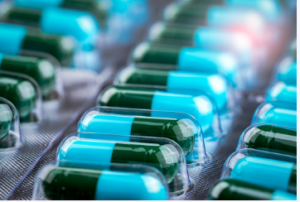Medical or prescription bottles are containers used to store medicines for human consumption. They come in various shapes and materials but typically glass or plastic.
This website covers the 19th and 20th centuries when medicine bottle types varied greatly. It was likely due to how important health was at that time.
 Size
Size
A sustainable packaging medicine bottle is indispensable for those who take medication regularly. These containers are made of plastic and come in various sizes to accommodate different dosages.
When selecting a medicine bottle, the size determines how many capsules or pills will fit inside. A smaller container is ideal if you only need a few dozen pills or tablets. However, if you need to store an extensive number of pills, then opt for a giant bottle.
Calculating the size of a medicine bottle can be done through measurements. First, measure from one side to the bottom face of the bottle and multiply its diameter by pi, giving you its circumference.
Another way to determine the size of a medicine bottle is by looking at its label. This label usually features a large print in an easy-to-read font and lists all contents clearly and concisely.
This material is often employed for packaging foods and other products. It’s durable and water-resistant, usually available in clear or coloured versions.
The size of a medicine is determined by the number of capsules or pills inside, so it’s essential to know how much you need before purchasing it. Doing this can save both money and time in the long run.
Refillable bottles are an excellent option for taking medications on the go if you want to reduce your waste. Not only are they easier to clean than disposable bottles, but you can reuse them multiple times.
Shape
The shape of a sustainable packaging medicine bottle is determined by its size and the material used. Common conditions include round, square and oval bottles made from high-density polyethylene or polypropylene.
These bottles were manufactured between 1810 and the Civil War, though some continued into post-Civil War times. Though varied in shape, they weren’t nearly as diverse as the variety produced during that period – especially after the Civil War when glassmakers began experimenting with more creative glass-making techniques.
Many of these bottles were manufactured using a two-piece “hinge” mould, as indicated by the diagonal mould seam across the base. Some had iron pontil scars, but blowpipe pontil scars are more prevalent than other forms on this group of bottles.
This bottle has a crudely applied short oil finish and was blown in a two-piece “hinge” mould, as evidenced by its diagonal mould seam across the base.
This bottle featured an early example of “whittled” aqua-coloured glass and was blown in a two-piece hinge mould without air venting, as this type of production predated widespread adoption by decades. This particular example dates from around 1850 or possibly even the mid-1860s, and it features typical characteristics associated with earlier ‘flattened’ medicinal bottles from this era.
Materials
Medicine bottles come in various materials, with glass and plastic being two of the most common. Both materials are durable and effective at protecting their contents. In addition, medicine bottles may have various colours depending on what ingredients are within them.
Glass has long been preferred for sustainable packaging medicine bottles due to its strength and inertness; however, plastic is becoming more widely used and popular.
Autoclaving and sterilising this material make it the ideal choice for pharmaceuticals. Furthermore, its resistance to various chemicals ensures that medicines in a bottle remain secure and effective over an extended period.
This type of plastic is highly resistant to mould and mildew, helping ensure the products within a medicine bottle remain secure for an extended period. Furthermore, it can withstand freezing temperatures – which is necessary for bottles containing cold medication or other items which might become damaged at lower temperatures.
Plastic medicine bottles are an economical and durable material made of recyclable plastic that can be recycled to create new bottles. This eco-friendliness makes plastic an ideal choice for companies wishing to reduce their environmental impact while still providing patients with essential medications.
